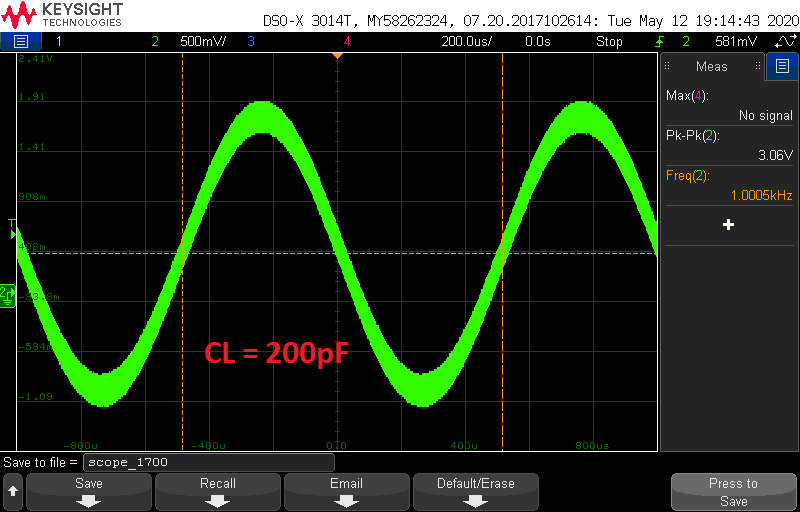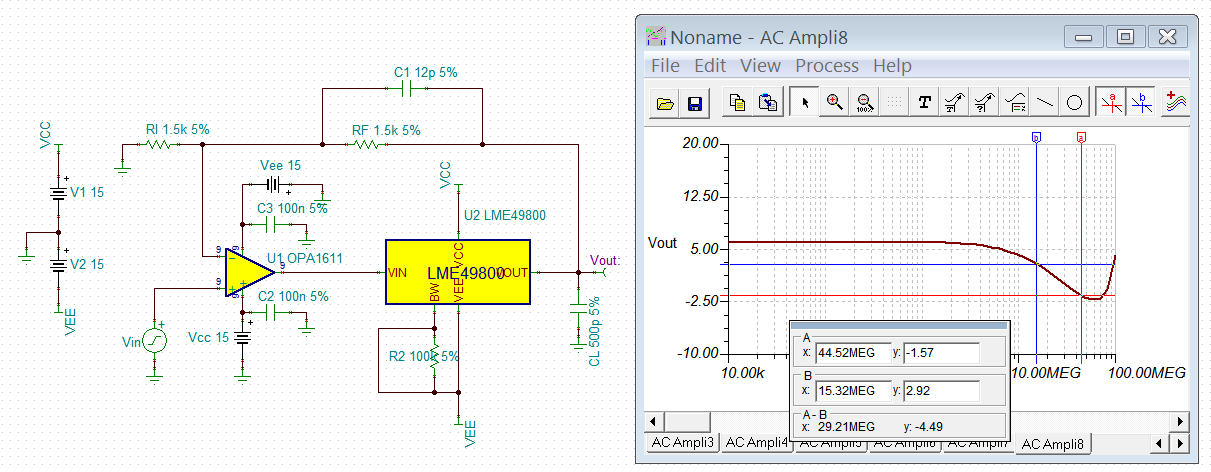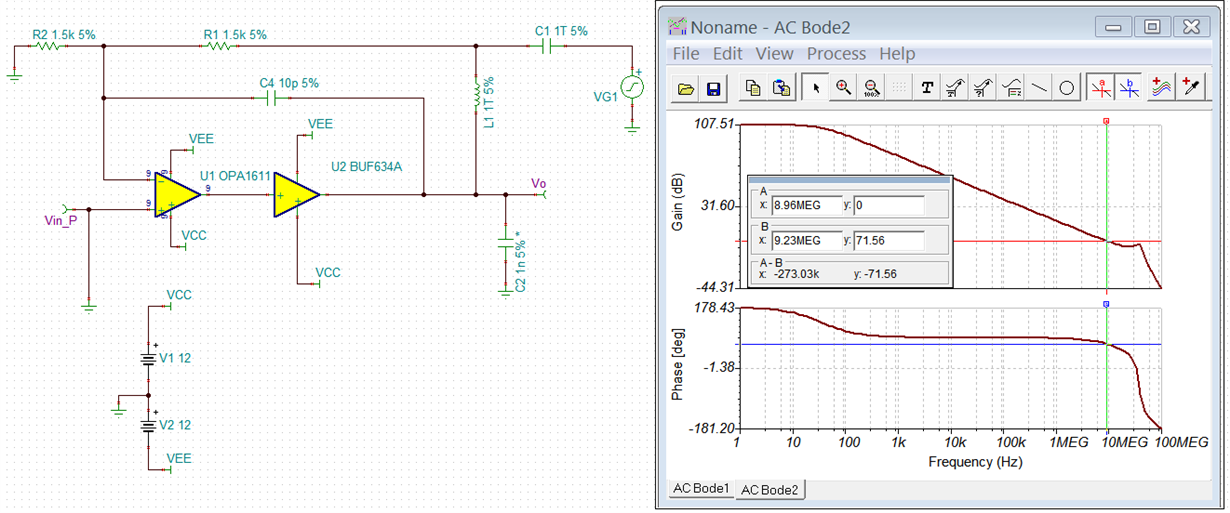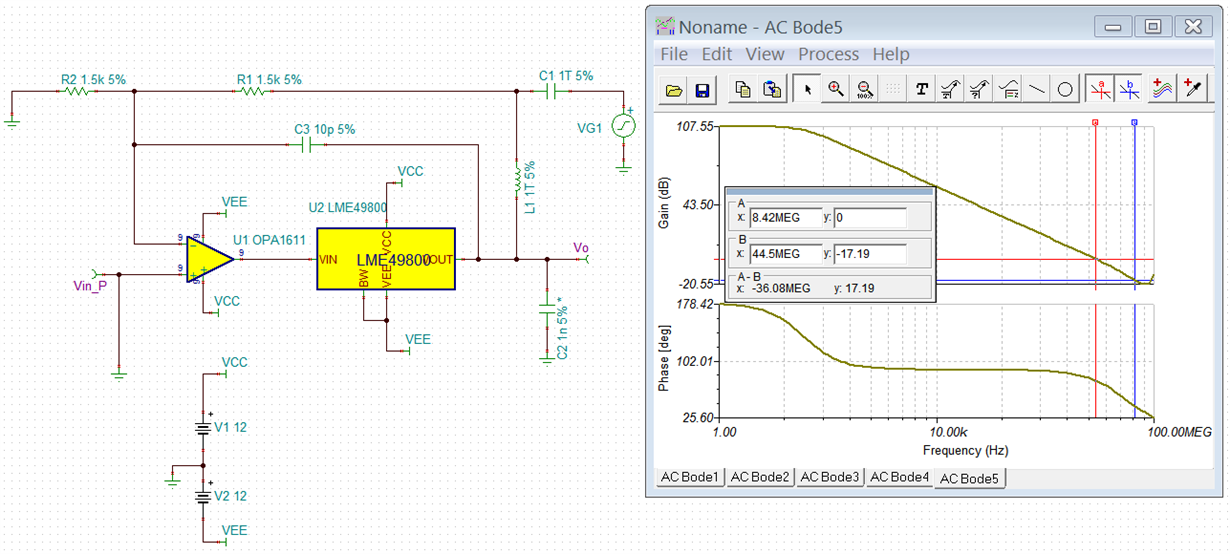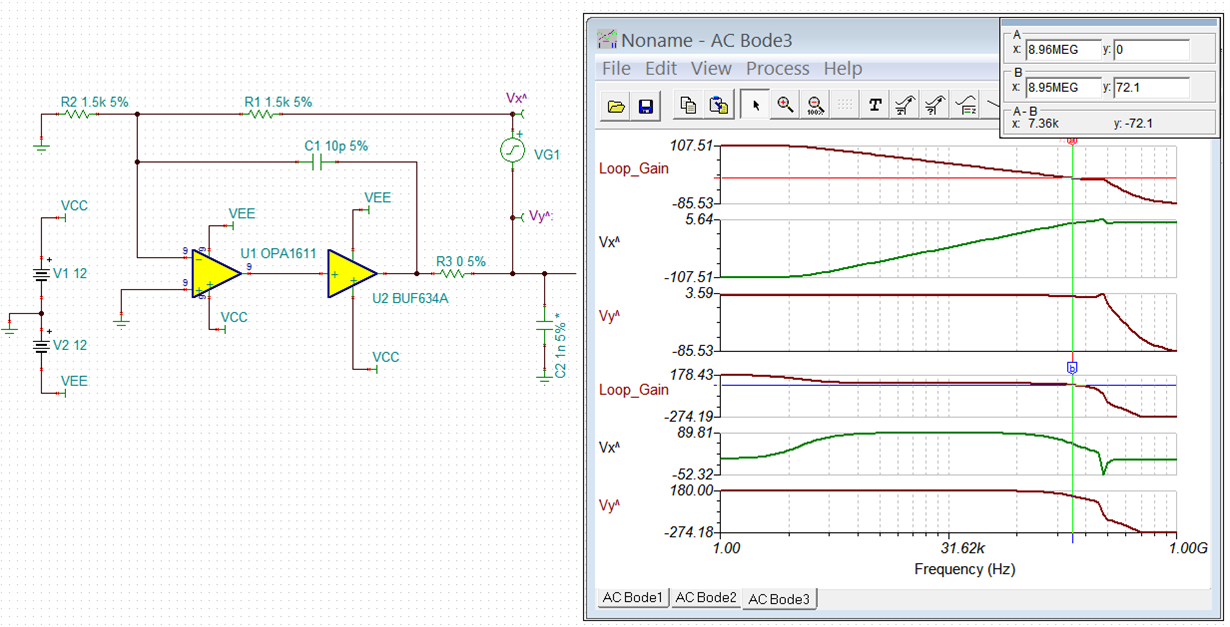Other Parts Discussed in Thread: LME49600, LME49720, OPA1612, BUF634A, OPA1622
Hello,
I'm working on a headphone amplifier project that use the circuit recommended in LME49600 datasheet. Only that I've replaced the LME49720 with OPA1612, hoping for better performance, and use 1.5k for both resistor in the feedback loop.
Since headphone cable is likely to add some capacitive loading to the circuit, I've been checking the performance when loaded with capacitor. But it seems that I am having a problem with stability.
The circuit works fine without capacitive loading. But once I add the capacitive load larger than 200pF, the circuit start to oscillate. The oscillation frequency is about 18MHz.
I also run some simulation to check. (The Cload characteristic is not modeled in the spice of lme49600, so I had to use the spice of BUF634A instead, but I assume the behaviors are similar.) Although the simulation shows there is a PM of 20 degree, but the trend is somehow similar: the PM decrease as capacitive load increases.
While more capacitor is added as loading in actual measurement, the oscillation freq then decreased to 16M, and 14MHz. These results seems quite expected when having such stability problem.
So it seems like the combination using OPA1612+LME49600 is not having enough phase margin for capacitive load. And as far as I know, some headphone cable indeed have parasitic capacitance up to 500pF.
I've also try it out with LME49720 and have the same problem. I'm now wondering if evaluation kit for LME49600 also have the same problem, because I suppose the THD+N performance is measured without capacitve load.
Does the recommend circuit really have this problem with capacitive load? Do you have any suggestion for stability? I would really appreciate it. Thanks in advance!!



